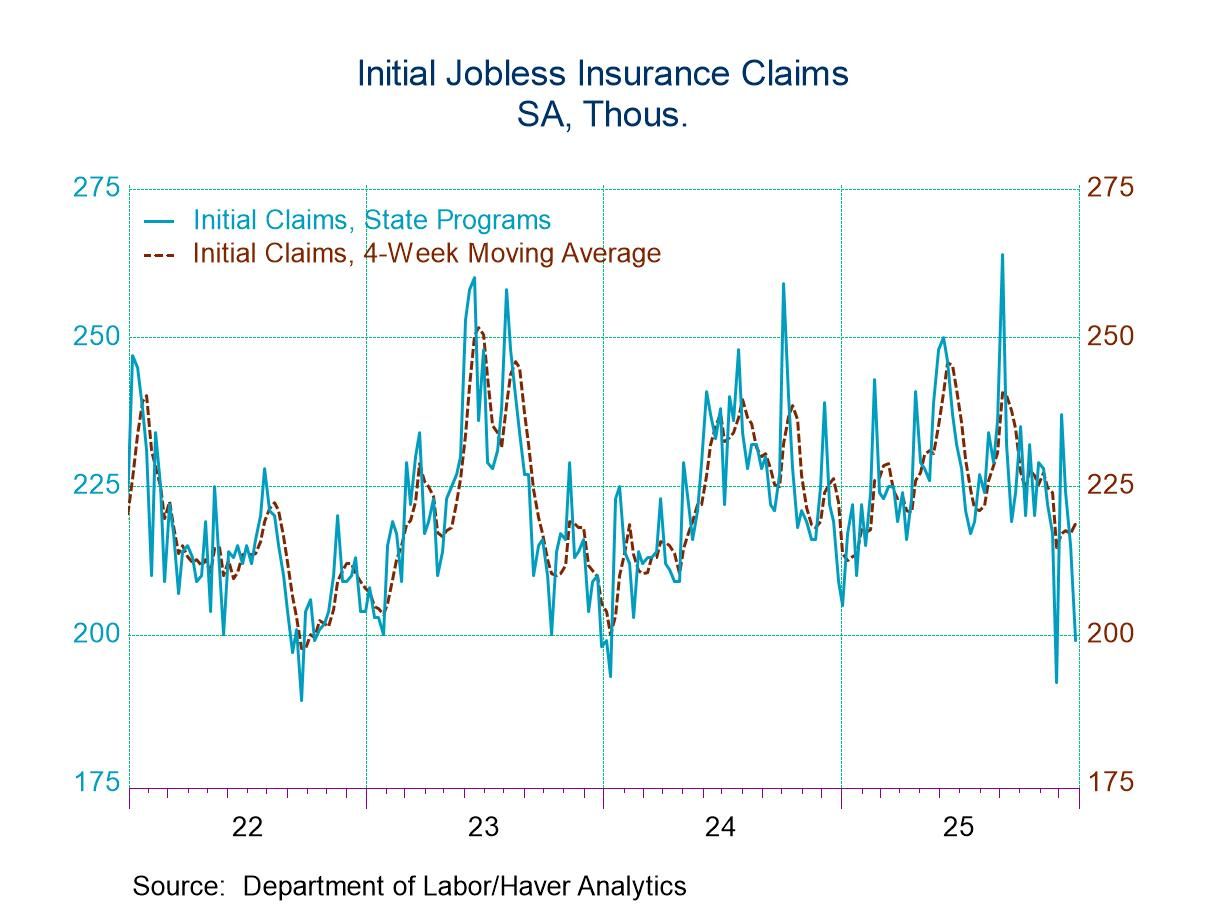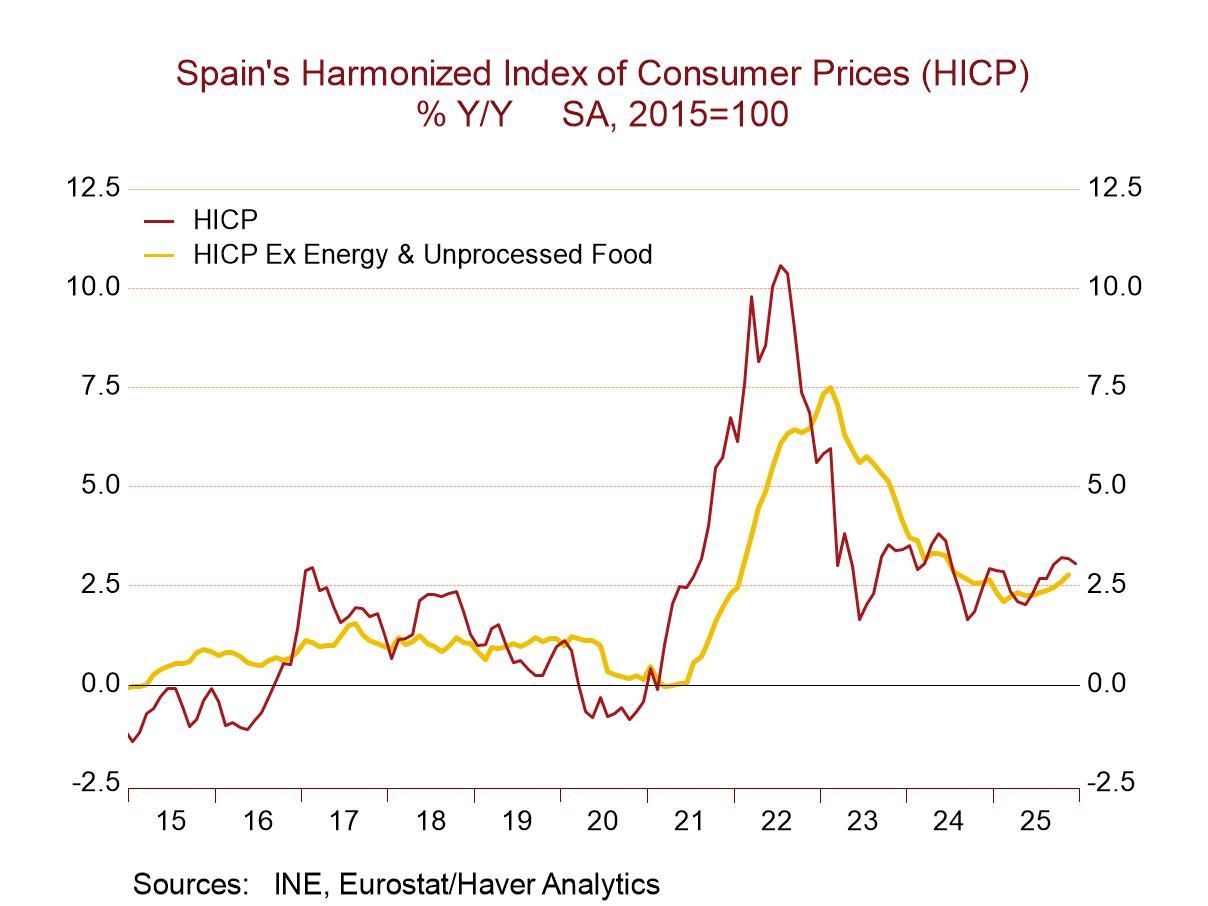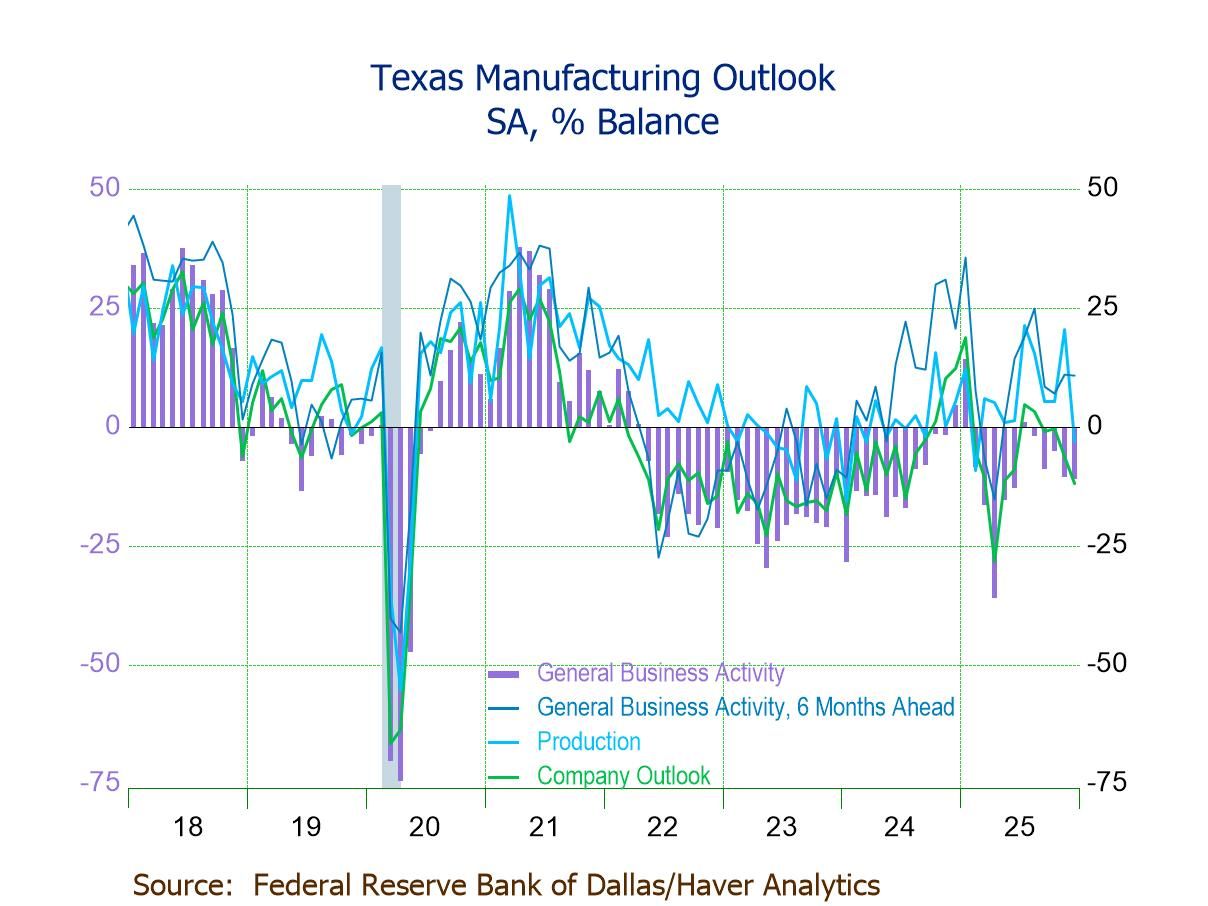U.S. PCE Price Index Growth Remains Modest in June; Spending Growth Steadies
by:Tom Moeller
|in:Economy in Brief
Summary
- Price index held down by continuing weakness in goods prices.
- Real spending increases modestly m/m; trend growth is slightly higher.
- Spendable income growth after inflation remains stable & low.


The PCE chain price index edged 0.1% higher in June after holding steady in May and rising 0.3% for three consecutive months. The 2.5% y/y rise is a three-year low for the measure and compares to its 7.1% y/y peak in June 2022. The price index excluding food and energy improved 0.2% last month after a 0.1% May gain, and also following three consecutive 0.3% increases. The steady 2.6% y/y increase remained the weakest since March 2021 and below the 5.6% peak in February 2022. Durable goods prices were unchanged (-2.9% y/y) after declining 0.8% in May and 0.2% in April. They were helped by a 0.6% decline (-3.6% y/y) in motor vehicle prices. Nondurable goods prices fell 0.3% (+1.2% y/y) after a 0.2% May slip, both held back by 0.3% declines (+0.2% y/y) in clothing prices. Services prices rose 0.2% (3.9% y/y) for the second consecutive month, the gain held back by the third consecutive decline (+2.8% y/y) in transportation costs. Services prices excluding energy & healthcare increased 0.2% (4.2% y/y) after a 0.1% rise. Food prices edged 0.1% higher in June (1.4% y/y) for a second consecutive month. Energy goods & services prices weakened 2.1% (+2.0% y/y) for the second consecutive month.
Personal consumption expenditures (PCE) increased 0.3% (5.2% y/y) during June following a 0.4% May rise, revised from 0.2%. A 0.3% increase had been expected in the Action Economics Forecast Survey. When adjusted for price changes, PCE rose 0.2% last month (2.6% y/y) after increasing 0.4% during May.
Real spending on durable goods fell 0.2% last month (+2.9% y/y) after increasing 2.3% in May. Real spending on motor vehicles weakened 2.6% (-2.8% y/y) and reversed the prior month’s increase. Real outlays on home furnishings & appliances strengthened 1.1% (3.6% y/y) after improving 1.2% in May while real spending on recreational goods & vehicles strengthened 1.3% (7.1% y/y) and added to the 2.9% surge May. Spending on other durable goods eased 0.1% (+6.9% y/y) after strengthening 1.4% in May.
Real spending on nondurable goods rose 0.5% (2.0% y/y) last month after edging 0.1% higher in May. Real clothing and footwear purchases jumped 1.1% (3.8% y/y), roughly repeating its May gain. These increases followed three straight months of decline. Real food & beverage purchases rose 0.3% (1.0% y/y) after easing slightly in May. Real outlays on gasoline & other energy products increased 1.1% (-0.9% y/y) after little change during the prior two months. Real spending on other nondurable goods rose 0.4% (3.0% y/y) after edging 0.1% higher in May.
Real spending on services improved 0.2% (2.8% y/y) in June for the second consecutive month. Real spending on housing & utilities rose 0.3% (1.7% y/y) after a 0.1% rise while real healthcare spending edged 0.1% higher (5.4% y/y) for the second consecutive month. Real spending on food services & accommodations eased 0.1% (+2.2% y/y) and reversed the May gain while real spending on financial services & insurance rose 0.4% last month (1.0% y/y) after easing 0.1% in May. Real spending on transportation services increased 0.2% in June (3.4% y/y) after rising 1.9% in May.
Personal income rose 0.2% (4.5% y/y) during June after increasing 0.4% in May, revised from 0.5%. A 0.4% gain was expected. Wages & salaries rose 0.3% (4.7% y/y) after a 0.6% gain. Rental income declined 0.7% (+6.0% y/y) for the third consecutive month while proprietors’ income was little-changed (+3.5% y/y) for the fourth consecutive month. Income from assets improved 0.1% (3.3% y/y) after two straight 0.4% increases and current transfer receipts rose 0.3% (5.1% y/y) for the second straight month. Government social benefits rose 0.3% (5.1% y/y) after rising 0.5% in May.
Disposable personal income increased 0.2% (3.6% y/y) in June following a 0.4% May rise. After adjusting for price changes, disposable income improved 0.1% (1.0% y/y) last month after rising 0.3% in May.
The personal saving rate fell to 3.4% last month from 3.5% in May, revised from 3.9%. The rate was down from a May 2023 high of 5.3%. Personal saving fell 3.0% (-28.3% y/y) after falling 1.2% in May.
The personal income and consumption figures are available in Haver’s USECON database with detail in the USNA database. The Action Economics forecasts are in AS1REPNA.


Tom Moeller
AuthorMore in Author Profile »Prior to joining Haver Analytics in 2000, Mr. Moeller worked as the Economist at Chancellor Capital Management from 1985 to 1999. There, he developed comprehensive economic forecasts and interpreted economic data for equity and fixed income portfolio managers. Also at Chancellor, Mr. Moeller worked as an equity analyst and was responsible for researching and rating companies in the economically sensitive automobile and housing industries for investment in Chancellor’s equity portfolio. Prior to joining Chancellor, Mr. Moeller was an Economist at Citibank from 1979 to 1984. He also analyzed pricing behavior in the metals industry for the Council on Wage and Price Stability in Washington, D.C. In 1999, Mr. Moeller received the award for most accurate forecast from the Forecasters' Club of New York. From 1990 to 1992 he was President of the New York Association for Business Economists. Mr. Moeller earned an M.B.A. in Finance from Fordham University, where he graduated in 1987. He holds a Bachelor of Arts in Economics from George Washington University.






